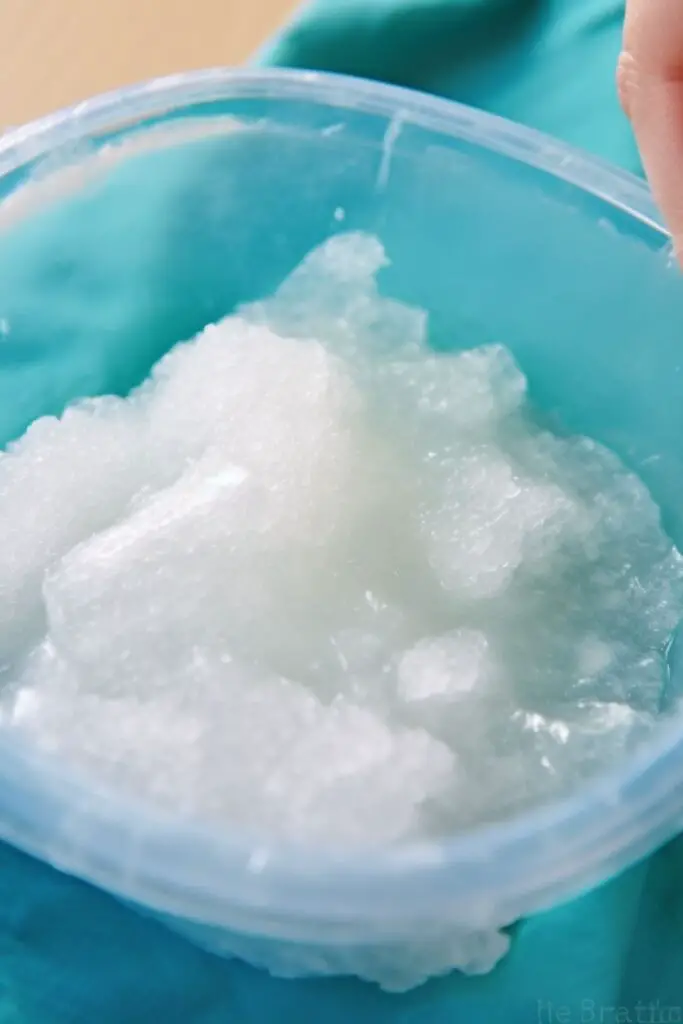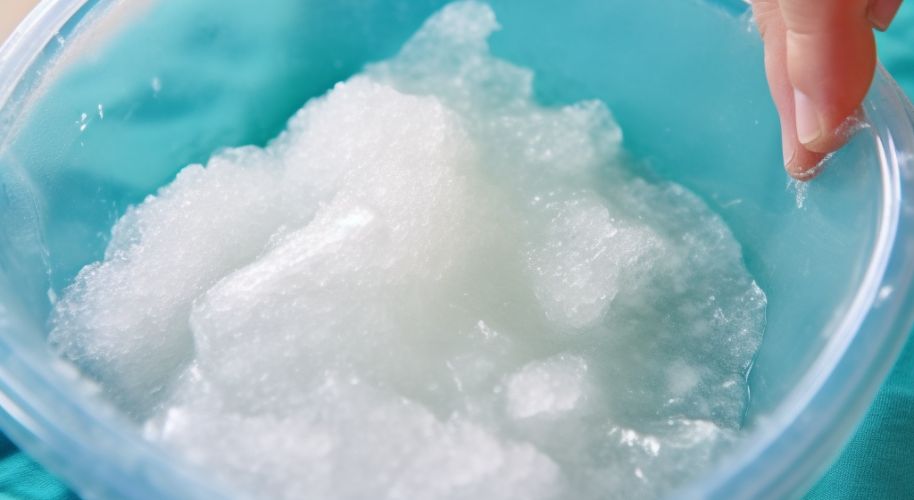Last Updated on June 5, 2025
Welcome to the world of diaper care! Have you ever wondered how to deal with that gel you sometimes find in diapers? The gel in diapers is typically a superabsorbent material designed to lock away moisture, keeping your baby’s skin dry. However, it can sometimes escape and form gel beads. Our focus here is to unravel the mystery behind dissolving this gel effectively.
In this guide, we’ll show you the ropes on dissolving diaper gel. Whether you’re a newbie or a pro, these tips will help you handle this common issue like a champ. Say goodbye to confusion and hello to a more comfortable diapering experience for your little one. Let’s dive in and unravel the mystery of diaper gel dissolution together!

Dissolving Diaper Gel Made Easy: Follow These Steps
Diaper gel, or sodium polyacrylate, is a super-absorbent polymer commonly found in disposable baby diapers. It’s designed to hold up to 30 times its weight in moisture, turning into a gel-like substance when wet. This gel can be challenging to dissolve, but you can manage it effectively with a few simple steps.
Identify:
The first step in the process is to identify the diaper gel. The gel usually appears as tiny, crystal-like beads when a diaper bursts or leaks. Collecting all the gel particles is important as they are quite absorbent and can cause blockages if not handled properly.
Soak:
Soak the gel in a mixture of warm water and detergent. This process should be carried out for at least an hour, but it might take longer, depending on the amount of gel. The detergent helps break down the absorbency of the gel, making it easier to dissolve.
Rinse:
After the soaking process, rinse the gel thoroughly. This will remove any remaining detergent, which may interfere with the next step of the process.
Dissolve:
To further dissolve the diaper gel, add table salt. Sodium chloride decreases the ability of sodium polyacrylate to absorb water, enabling it to revert to a more manageable powder form.
You Might also Like These Resources!
The Importance of Dissolving Diaper Gel: Why It Matters

Understanding how to dissolve diaper gel isn’t just a convenient skill for parents dealing with diaper mishaps—it’s also crucial for environmental reasons. Super absorbent polymers like those in diaper gels are non-toxic, but they aren’t entirely harmless. They can cause significant blockages if flushed down toilets or drains, leading to costly repairs and potential environmental damage.
Moreover, if a diaper accidentally ends up in the washing machine, the mess can harm your clothes and the machine itself. The gel can stick to clothing, requiring multiple washes to remove and clog the machine’s drain system. Knowing how to dissolve diaper gel can help to solve these disasters.
Handy Hints for Diaper Gel Dissolution
Here are some additional tips to make the process of dissolving diaper gel easier and more effective:
Always use warm water: Warm water is more effective at breaking down the diaper gel than cold water. The heat helps to weaken the bonds within the gel, making it easier to dissolve.
Use a bucket or large container: Dissolving diaper gel can be messy, so it’s best done in a large container. This provides ample space for the gel to dissolve properly and makes clean-up easier.
Be patient: Dissolving diaper gel isn’t a quick process—it can take some time, especially if there’s a lot of gel. Don’t rush the process; give the gel ample time to dissolve fully.
Accidentally Put A Diaper in the Washing Machine? Here’s What to Do
If a diaper accidentally ends up in your washing machine, don’t panic. While it’s certainly inconvenient, there are steps you can take to mitigate the damage:
Stop the machine: As soon as you realize a diaper is in the wash, stop the machine. This will prevent the gel from spreading further and minimize potential damage.
Remove the diaper: Carefully remove the diaper and any loose gel from the machine. Be sure to check under the agitator and in the drum for hidden gel beads.
Clean the machine: Once you’ve removed as much of the gel as possible, run a rinse cycle to clean out the machine. You may need to repeat this step several times to ensure all the gel is gone.
Check the drain: Diaper gel can easily clog the drain system of your washing machine. If your machine isn’t draining properly after the incident, check the drain and remove any blockages.
Frequently Asked Questions
How do I clean my washing machine after a diaper mishap?
After removing the diaper and any loose gel, run a rinse cycle to clean out the machine. You may need to repeat this step several times to ensure all the gel is gone.
How can I maintain hygiene when handling diaper gel?
Always wear gloves when handling diaper gel to prevent direct contact with the skin. After the process, wash your hands thoroughly with soap and water.
Is it Safe to Reutilize Dissolved Diaper Gel?
No, it’s not recommended to reuse dissolved diaper gel. This polymer, originally designed for single-use in diapers, may retain traces of waste even after dissolving, posing health risks. The dissolution process also diminishes its absorbency. Additionally, mishandling or accidental ingestion can pose safety hazards. Instead, proper disposal is advised to maintain hygiene and safety.
How long does it take to dissolve diaper gel?
The time it takes to dissolve diaper gel can vary. It typically takes at least an hour of soaking in warm water and detergent, but it might take longer, depending on the amount of gel.
Wrapping Up
Learning how to dissolve diaper gel shows you’re a caring parent. We’ve learned why the gel forms and how to handle it and learned useful methods for easier diapering. Your effort to understand this helps keep your baby comfy.
Being a parent is a learning journey, and your willingness to learn prepares you. As you change diapers, you now know how to make things cozy and happy for your little one. With this knowledge, you’re ready to handle parenting challenges with confidence, keeping your baby happy and healthy.
You Might Also Like These Latest Content!
- Safely Removing an Evenflo Car Seat from Your Stroller
- Connecting Your Nanit Baby Monitor to WiFi
- Changing Diapers When Your Baby Keeps Rolling

Amy A. Vincent is a Certified Pediatric Sleep Consultant and a mother of three beautiful children. She helps parents transition their babies from swing sleep to safe, independent sleep. She is passionate about helping parents teach their children the skills needed to become good sleepers and aims to make the process as easy and stress-free as possible. Read more
